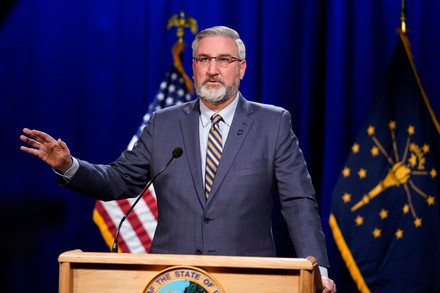HOT JOBS
|
||||||||||||||||||||||||||||||||||||||||||||||||||||||||||||||||||||||||||||||||||||||||||||
|
|
Vanderburgh County Commissioner Musgrave Announces Candidacy For Mayor of Evansville
COUNTY COMMISSIONER CHERYL Musgrave Announces Candidacy for Mayor of Evansville
Cheryl Musgrave, Vanderburgh County Commissioner, today announced that she will be a candidate for Mayor of Evansville in next year’s city elections.
Musgrave is in her third term as County Commissioner, a three-member board that functions as the chief executive of county government. In that role, she most recently negotiated and implemented a ground-breaking contract bringing high-speed internet to the entire county outside city limits. She is now working on a major multi-million-dollar upgrade to the county-owned historic Soldiers and Sailors Memorial (Veterans) Coliseum in Downtown Evansville. Throughout her career, Musgrave has also championed major road and infrastructure upgrades.
“I will bring both an independent perspective and a strong conservative sense of duty to the role of mayor, building on the achievements of the past to make the future even better,†Musgrave said. “I love this city. I have called it home for decades, and three generations of my family live here. I want Evansville’s future to be as bright as it can be.â€
Musgrave also served in Gov. Mitch Daniels’ cabinet during his first term and has a long history of public service, both locally and state-wide. Her innovative and independent approach has won widespread admiration and brought results.
CenterPoint Energy Urges Customers To Be On Alert For Utility Service Disconnection Scams
 ​ Evansville – July 7, 2022 – CenterPoint Energy is alerting customers of reported increases in door-to-door, phone call and text message scams. Reports of individuals impersonating CenterPoint Energy have employed various tactics, including requests to check electric meters at customers’ homes and spoofing company phone numbers to threaten service disconnection.
 CenterPoint Energy will never call a customer and demand payment over the phone to avoid immediate disconnection. The company would never ask customers to make payments with a pre-paid debit card, gift card, any form of cryptocurrency, or third-party digital payment mobile applications. Furthermore, all CenterPoint Energy technicians and contractors will have a company badge to display when performing work.
“We encourage customers to remain on high alert as we continue to see utility scams on the rise across our service territories,†said Ashley Babcock, Vice President, Indiana and Ohio Gas. “Any customer who is approached with what they believe to be a scam should report the incident to CenterPoint Energy through our online Customer Service form.â€
CenterPoint Energy continues to identify opportunities, such as working with its phone vendors, to mitigate the risk of scam calls to its customers. While scammers can spoof CenterPoint Energy’s phone numbers, if the company’s name is not displayed on the caller ID when receiving a call to a mobile device, it can be considered a scam call and the customer should hang up immediately.
If a customer needs to verify their account status, they may call customer service at the number listed on their bill or log in to their account on our website. Customers should not send money in any form until their account status has been verified with Customer Service.
Depending on the particular scam, customers who believe they have been a victim can also take the following steps to report:
- File a report with the local police department.
- File a report with the FBI.
- File a complaint with the Federal Trade Commission.
Overturn Of Roe Vs Wade
Overturn Of Roe Vs Wade –Let’s Pause and Work Towards an Amenable Solution
By Dannie McIntire
JULY 8, 2022
The overturn of Roe Vs Wade by our Supreme Court has inflamed emotions on both sides of the abortion debate into very distinct “us†versus “them†camps, “Pro-Life†versus “Right-To-Chooseâ€.
So where does the Supreme Court’s 2022 decision to overturn its earlier 1973 decision leave the issue of abortion?
First and foremost, the Supreme Court’s overturning of Roe Vs Wade did not make abortion illegal in regard to Federal Law.Â
Regardless of which political spectrum you identify with, I believe all of us need to pause the “hatred†that seems to have become so intense between the two “ideologies†and examine what the Supreme Court’s ruling in overturning Roe Vs Wade actually has done.
The court basically ruled that since abortion was not directly protected under the Constitution of the United States, the question of whether abortion should be legal or illegal was a “States Rightâ€, protected under the 10th Amendment. Â
Under the Bill Of Rights 10th Amendment, all rights and powers not specifically reserved to Congress by Article I, Section 8, of the Constitution are reserved by the states.
The recent Supreme Court ruling in essence found that the 1973 Supreme Court ruling overstepped the federal government’s powers under our Constitution.
I think the rationale behind the court’s ruling needs to be celebrated, not on the basics of the abortion question, but that “the people†have the right to determine the issue. I think it bodes well for our democracy when that last step in our judicial system “rule of law†can say, “Oops, the earlier court in 1973 violated the Constitution by asserting a power it did not have. Â
Now it’s up to the elected legislators in Indiana to determine, if so inclined, any tightening or loosening of abortion restrictions within the state of Indiana.
“The ball†in essence has been thrown back into “the people’s courtâ€. Now it is “your job†as a citizen of Indiana, if so inclined, to let your state representatives know your feelings on the issue of abortion.
Research your representative’s stand on the issue of abortion, if it lines up with yours, let them know that, and let them know they will receive your vote the next time they stand for reelection.Â
If your representative’s stand on abortion doesn’t line up with yours, let them know that, and let them know they will not receive your vote the next time they stand for reelection.Â
But first and foremost, I hope the citizens of Indiana, regardless of their stance on the issue of abortion, if they engage one another on the issue of abortion, will remember that everyone has the right to their own opinion.
My opinion, if different than yours, doesn’t make yours wrong, as yours doesn’t invalidate mine.
Â
  Â
Trailblazers Add Two-Time NJCAA All-Region Wing To 2022 Recruiting Class
VINCENNES, Ind. – The Vincennes University Trailblazer men’s basketball team struck big with their final scholarship signee of the 2022 recruiting season in two-time NJCAA All-Region wing Caleb Johnson.
Johnson comes to Vincennes originally from Nova Scotia, Canada and began his collegiate career at Williston State College in Williston, N.D. during the COVID shortened 2020-21 season.
Johnson helped guide the Tetons to a 12-11 record during his only season at Williston, starting in 12 of the 22 games he played in and averaging 16.4 points, 5.8 rebounds and 1.1 steals per game.
Johnson’s season-high at Williston State was a 27-point outing against Dawson Community College, which helped Johnson earn All-Region 13 Honors at the end of the season.
Johnson then transferred to Angelina College in Lufkin, Tex. for the 2021-22 season, where he started 23 games for the Roadrunners.
Johnson averaged 13.6 points, five rebounds, and 2.3 assists per game at Angelina, including a 25-point game against Coastal Bend College.
Johnson ended the season with All-Region 14 Honorable Mention honors.
Johnson is a six-foot-four wing player, who will most likely fit into a ‘small forward’ type of position on the floor, but he does give Hall of Fame Head Coach Todd Franklin options to either use him as a big shooting guard or possibly a stretch power forward as well.
“We’ve known Caleb since he was in high school,†VU Hall of Fame Head Coach Todd Franklin said. “For one reason or another, it just hadn’t worked out to get him here before now. He went to Williston out of high school for one semester. He played there, had a good year for them, and played well. Then he decided to leave there and play at Angelina.â€
“When he signed with Angelina he signed with a coach that was supposed to be there, but the coach took a Division I Assistant job,†Franklin added. “Caleb decided to stay at Angelina and had another good year. Then at the end of the year, he reassessed and decided he wanted to go somewhere else.â€
“We looked at him. Caleb has always been a hard-playing guy,†Franklin said. “He defends really well. He’s probably a three if you have to say what position he is, but he can play as a big two or even a stretch four at times, so he gives us some versatility. But probably his best position is as a three. He has good size at that position, he is long. He has scored at a pretty high level at this level.â€
“But probably what he does better than score is as a defender,†Franklin added. “He is a very good one-on-one defender guarding on the wings. I think there are some guys in our Region that are going to be difficult matchups to try to stop and I think we’ve added some guys this summer, Caleb being one for sure, we can match up with to defend.â€
“We had 10 guys in here during the summer for our summer workouts and on top of them we are going to be adding four guys that are 6-5 that range anywhere from being a point guard to a power forward and anywhere from 195 to 230 pounds,†Franklin said. “Adding those to what we had was something we looked at.â€
“I think now if you look across our team, we feel like if everybody is healthy and going, we are going to have some pretty good, three-deep competition at all five spots,†Franklin added. “I think we’ve got good size across the board, with some versatility there. We will be able to play in a variety of ways and I think Caleb will help with that.â€
“We were excited to get him and I think he is excited to be here,†Franklin added. “This summer was the first time I was really able to get out and recruit in a while. I was on the road very extensively this summer and most of these guys that we’ve brought in were guys that I was able to get out and see live and be involved with. I feel good about it. I feel good about our team right now.â€
“I think our team has the potential to be a pretty good team,†Franklin said. “How good? Well, we’ll see how well everybody meshes and who takes off and emerges and improves, as well as how well we avoid injuries. We’re still waiting on a few things. We’ll see how Dende looks when he gets back. We’ve been getting good reports, but there is no way of knowing until he gets here.â€
“We’ve got a lot of new parts, but we had a lot of those new parts here this summer,†Franklin added. “Hopefully that will help expedite the process. I thought the summer went fairly well. I think the guys like each other and they worked fairly hard. I think there are some really promising signs. We’ll see who emerges as leaders, but I think from the standpoint of what we wanted to go out and get, at the end of the day I like our team and I like our chances. It’s just a matter of how hard we work and how dedicated we want to be.â€
“I think we are back on track, now it’s time to get it done, get back to work and do it,†Franklin said. “That’s been our mentality. We are not going to talk a whole lot or say a whole lot. We had some things happen last year that hadn’t happened in the previous 25 years. If some people want to turn on us, go ahead, but we are back to doing business as business had been done for a quarter century under my watch.â€
“I feel like we are pretty much back to normal, except for not having guys coming back who had been a part of a Sweet Sixteen, Elite Eight or Final Four,†Franklin added. “I think that is the one thing that is lacking from this team that would have been true during our tournament run. Other than that I think we are back to the same type of guys and same type of talent level across the board that we like and guys that I’ve been able to get out and see. I believe, now we have to go prove it.â€
The Vincennes University Athletic Department is excited to welcome Caleb Johnson to the 2022 recruiting class.
Gov. Holcomb Announces Indiana Hosting Ukrainian Olympians

Hammond Central High School Will Serve As The Training Site
INDIANAPOLIS – Today, Gov. Holcomb announced that the State of Indiana, Indiana Sports Corp, and the South Shore Convention and Visitors Authority (SSCVA) collaborated to relocate the men’s Ukrainian Olympic Greco-Roman Wrestling Team to Indiana to serve as its training location this summer.
“We are so happy to play our small part in providing these world-class athletes with refuge to continue their training in such a fantastic facility,†said Gov. Holcomb. “This confirms what we have known all along – that our strongest state export has, and always will be, our Hoosier Hospitality.â€
The team will travel to Hammond, Ind. on Thursday, July 7, where they will train at Hammond Central High School until Aug. 3. The wrestlers will use the state-of-the-art high school facility which opened in 2021, which includes a weight room, track, football field, gymnasium, and pool.
The collaborative support stemmed from Gov. Holcomb’s and Indiana Secretary of Commerce Brad Chambers’ meeting in March with the Ambassador of Ukraine at the Ukrainian embassy in Washington just two weeks after the Russian invasion of Ukraine began. At that time, Gov. Holcomb committed to doing anything Hoosiers can to assist during their time of need.
“Indiana Sports Corp is proud to partner with the State of Indiana and the SSCVA to provide a training location for the Ukrainian Olympic Greco-Roman Wrestling Team,†said Ryan Vaughn, Indiana Sports Corp President. “Indiana offers premier sports facilities across the state, and we are grateful our Team Indiana partner SSCVA raised their hand to take on this opportunity.â€
As part of their three-week stay, the Ukrainian Olympic Greco-Roman Wrestling Team will have joint training sessions and meetings with local wrestlers. These gatherings will allow local wrestlers to learn from the Ukrainian team and allow both parties to share experiences on and off the mat. The SSCVA is handling local logistics for the team and plans to provide several offsite experiences, including a welcome reception, throughout the duration of their time in Indiana.
“Northwest Indiana and the SSCVA are honored to be hosting the Ukrainian Olympic athletes,” said David Uran, President, and CEO of the SSCVA. “This is a fantastic opportunity for the region to extend our Hoosier hospitality while we assist these athletes to reach their Olympic dreams.”
“The School City of Hammond is excited to welcome the Ukrainian Olympic Greco-Roman Wrestling Team to train and utilize the state-of-the-art athletic facilities at Hammond Central High School,” stated Scott Miller, Hammond Schools Superintendent. “The opportunity to host world-class athletes and have them work alongside our student-athletes is incredible and we look forward to their arrival.”
The Ukrainian Olympic Greco-Roman Wrestling Team has a strong history of success at the Olympic Summer Games. At the Tokyo 2020 Olympic Games, Ukrainian Greco-Roman Wrestling Team ranked third, wrestlers garnered one gold medal in the 87 kg weight category, a silver medal in the 67 kg weight category, and took 5th place in the 60 kg weight category.
All travel and arrangements for the athletes and their coaches was made possible by a grant provided to the Indiana Sports Corp from the Indiana Economic Development Corporation.
Board of School Trustees of the Evansville Vanderburgh School Corporation Meeting
 The Board of School Trustees of the Evansville Vanderburgh School Corporation will meet for the regularly scheduled Board meeting Monday, July 11, 2022 at 5:30 PM in the Board Room of the EVSC Administration Building located at 951 Walnut Street, Evansville, IN. Board meetings can also be observed by tuning to EVSC’s radio station, 90.7 WPSR or live streamed online at https://www.wpsrhd.com/.Â
Prior to the regularly scheduled Board meeting, three members of the Board, along with district administrators, will hold a Town Hall beginning at 5:00 PM. This Town Hall is for Vanderburgh County residents to speak directly with Board members in attendance about issues involving EVSC schools. The Town Hall will be the process utilized to receive Public Comment. The Town Hall will be held in the Technology and Innovation Center located at 951 Walnut Street, Evansville, IN. Members of the public who would like to attend the Town Hall should register by completing the Town Hall Registration Form located on our website at district.evscschools.com.Â









